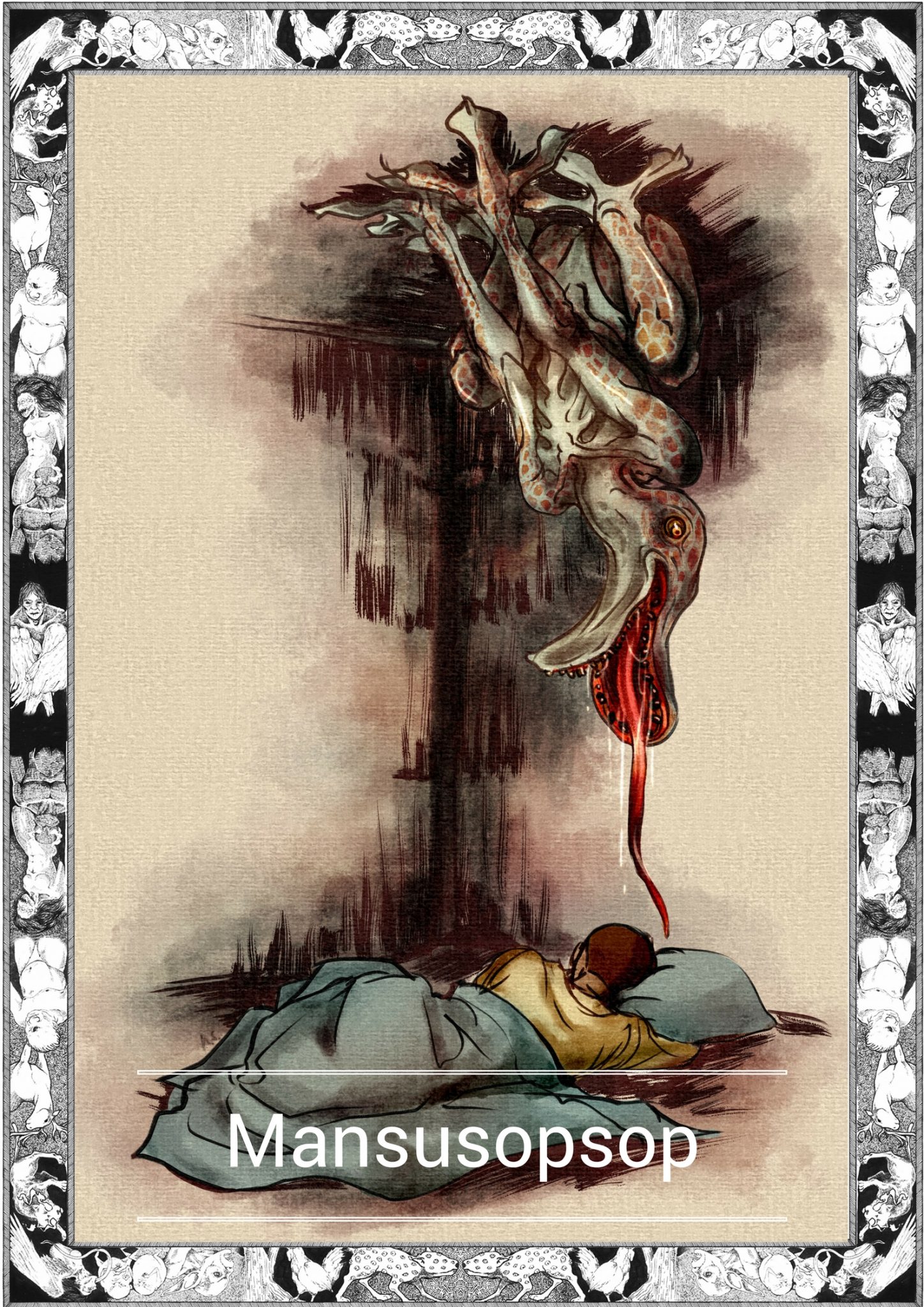
*Note this story is in Pangasinan/ Pangasinense
Ag nanduruma so nakokogip kon leplep.
Ungagapo ya amin ëd dukólan. Wala’d ospital ak ya lanang. Ag ni amtay doktor no anto so aliwa’d siyak. Saliën da ak lalamët na sananëy. Amtak nasakitan ak lalamët ëd saya balët ag ko ipakasalanan iramay doktor ta gagawaën da labat so kimëy da.
Simabi iray dagum. Inturók da ëd siyak na pigaran oras. Panbabagaán da ak iray nurse ya maganģano la ‘yan nasumpal insan ag umbayag unabig ak la. Anģapo kuno so gawaën dan maugës ya ikaasinggër ko’d caatapan. Uningas labat la kuno so gawaën ko, anģad nasumpal ‘ya.
Balët mas antakot ak. Kasumpal iray panagsáli da ëd siyak, nanmaliwan bukor ko’d dukólan ëd dalëm to iyan ospital. Singa imay gapo. Imbaga da, imatonan da ak kuno insan pawilën da ak na doktor kada naogonoyan.
Ëd saman ko anëngnëng, wala so ambalangan andukëy a agko nabirbir ya mananalapu’d atëp. Ag ko amta no anto iman insan ag ko mët amta no wala so pampëpëkëtan to. Balët singa mabilay. Ag ak makagalaw. Ag ko naiarawi imay ambalanga ëd siyak ta akësawan ak ëd amin na insáli da ëd laman ko.
Insan ko natan alikna. Pimëkët ëd siyak imay ambalanga, insan abilay so laman ko ya singa akila ak ëd lumbaan a batik. Insan abalang so amin a kasil ko. Akësawan a maong, anģad anģapo lay kasil pian nataktakot ni. Nilinģis ko labat la imay ambalanga. Ambëtël so pëkët to ëd katat ko. Timonda nën adiwit to lan amin so biyëk tan biyëk na sayan laman ko.
Insálik so unëyag balët naksawan ak ya maong. Nalilikas ko imay sananëy a pakalikna ëd intiron laman ko. Ag ko la nabitla so inkabayag to, labay ko labat la so unugip.
Insan simabi imay nurse. Abalang imay ambalangan anëngnëng ko. Tinëpët to ak no maong ak labat balët anģapo so kasil pian ibagan andi.
“Ag ka mapaga, nabangon ka ni anģad naani nin daisët lapu’d samay tambal. Naogonoyan makaugip ka la ëd satan,” imbaga to may nurse.
Sinálik so unëyag balët anggapo so tanol to.
——————————————————-===
English Version
Every nightmare I have is the same.
It all starts in my bed. I’m in the hospital, as always. The doctors still don’t know what’s wrong with me. They say that they’re going to try another test and I humor them. I know it’s going to be painful for me, but I don’t blame the doctors, they’re just trying to do their jobs.
Then the needles arrive. I get poked and prodded for hours. The nurses try to reassure me. They tell me that everything’s going to be fine and it will all be over soon. They wouldn’t do anything that would make things worse so all I have to do is breathe, just until it’s over.
The worst part comes when it’s all over. After the tests and the treatments, I’m alone in my hospital bed. Back where I started. They tell me I’ll be put on observation and there will be a doctor checking on me every few hours.
That’s when I see it, something long and red coming from the roof. I don’t know what it is and I don’t know if it’s attached to anything, but it moves like it was alive. I can’t move. I’m too weak from all the tests to stop it from touching me.
Then I feel it. The moment the red thing touches me, it’s like I ran a marathon. The energy flows out of me until I’m too tired to even be afraid. All I do is stare at the red thing. It feels cold to the touch and it moves around until it touches every part of my body.
I try to scream but I’m too tired. The strange sensation is all over my body now and I don’t know how long it’s been. I just want to go back to sleep.
Then suddenly, a nurse walks in. The red thing disappears from my sight. She asks me if I’m okay and I can’t muster the strength to say no.
“Don’t worry the medicine will only keep you awake for a little while longer then you can sleep,” she says.
I try to scream again but nothing comes out.
————————–
*Pangasinan (Salitan Pangasinan) – sometimes called Pangasinense is one of the major languages of the Philippines. It is the language spoken in the province of Pangasinan, on the west-central seaboard of the island of Luzon along the Lingayen Gulf, the northern portion of Tarlac and southwestern La Union, most of whom belong to the Pangasinan ethnic group. Pangasinan is also understood in some municipalities in Benguet, Nueva Ecija, Nueva Vizcaya, and by the Aeta or Aeta of Zambales.
Written by Karl Gaverza
Translation by Dean Alfred Narra
Copyright © Karl Gaverza
Translation Copyright ©Dean Alfred Narra
Inspired by the Mansusopsop legends
Mansusopsop Illustration by NightmareSyrup
Tumblr: http://
IG: @NightmareSyrup
